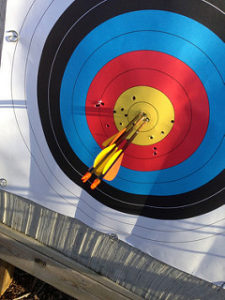 I have recently found myself concerned with issues related to measuring community engagement, particularly its benefits to arts organizations. (Two-Phase Engagement; Reach and Frequency) There is a tendency among some to know that community engagement is a good thing and, therefore, to resist attempts to measure it’s impact. If I’m honest, I may sometimes find myself in that group. There are others who assume that community engagement is at best “nice” and are dismissive of its potential to yield practical benefits for the organization.
I have recently found myself concerned with issues related to measuring community engagement, particularly its benefits to arts organizations. (Two-Phase Engagement; Reach and Frequency) There is a tendency among some to know that community engagement is a good thing and, therefore, to resist attempts to measure it’s impact. If I’m honest, I may sometimes find myself in that group. There are others who assume that community engagement is at best “nice” and are dismissive of its potential to yield practical benefits for the organization.
To be sustainable, community engagement must benefit the arts organization in tangible ways. To be supported institutionally, the path to ticket sales (via increased reach), funding (via money from donors, corporations, and foundations who will never support the arts status quo), and public policy (via broad-based public enthusiasm for the impact of the arts on people’s lives) must be articulated and tracked.
A principal difficulty in this is that in order to accomplish these gains we must do work in marketing, funding, and advocacy that we’ve almost never done before. That is, we must lay groundwork among people who are not already pre-disposed to value the arts. (If you believe that a viable future for arts organizations exists without reaching new communities and new funders you may stop reading now.)
As I have pointed out on numerous occasions, immediate improvements in sales, funding, and public policy are impossible when you are approaching new people who are either apathetic about or hostile to the arts. First, we must build trust and, while doing so, measure indicators of improving relationships–for example, willingness to meet, willingness to introduce others, and (eventually) willingness to work together. Clearly, that is at least a one- or two-year project. Only after the foundation is built can we begin to set goals for the more traditional measures of institutional benefit.
Don’t have the resources to devote to this? What’s your alternative? Let’s reconvene in forty years and see who is still in business.
Engage!
Doug
Photo: ![]() Some rights reserved by kartfamily
Some rights reserved by kartfamily
